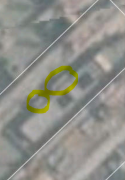making a ship’s draft as deep as practical is actually good design practice, because all else being equal, a deeper hull is hydrodynamicslly more efficient. However, practically how deep a hull can be is constrained by the depth of water where the ship must operate, and the dimensions of docking and other support facilities, and the fact that most warship needs some margin to accommodate weight growth through its life.The draft changes with the change in displacement. This is why Kuznetsov, Liaoning, and Shandong have different displacements with the same hull.
Consequently, if there no other rigid dimensional limits, such as the width of locks on the panama canal, when two large warships of broadly similar size are both designed from scratch, their initial drafts will tend to be constrained to be the about the same by the same set of considerations, the difference in their displacement would be menifested primarily differences in length, beam or block coefficient.
Chinese navy have no real constraints on beam on length that I am aware of. this suggest their large warships would all be designed like to have the same maximum draft practicable, while their differing displacements reflected in their differing length and beams.



